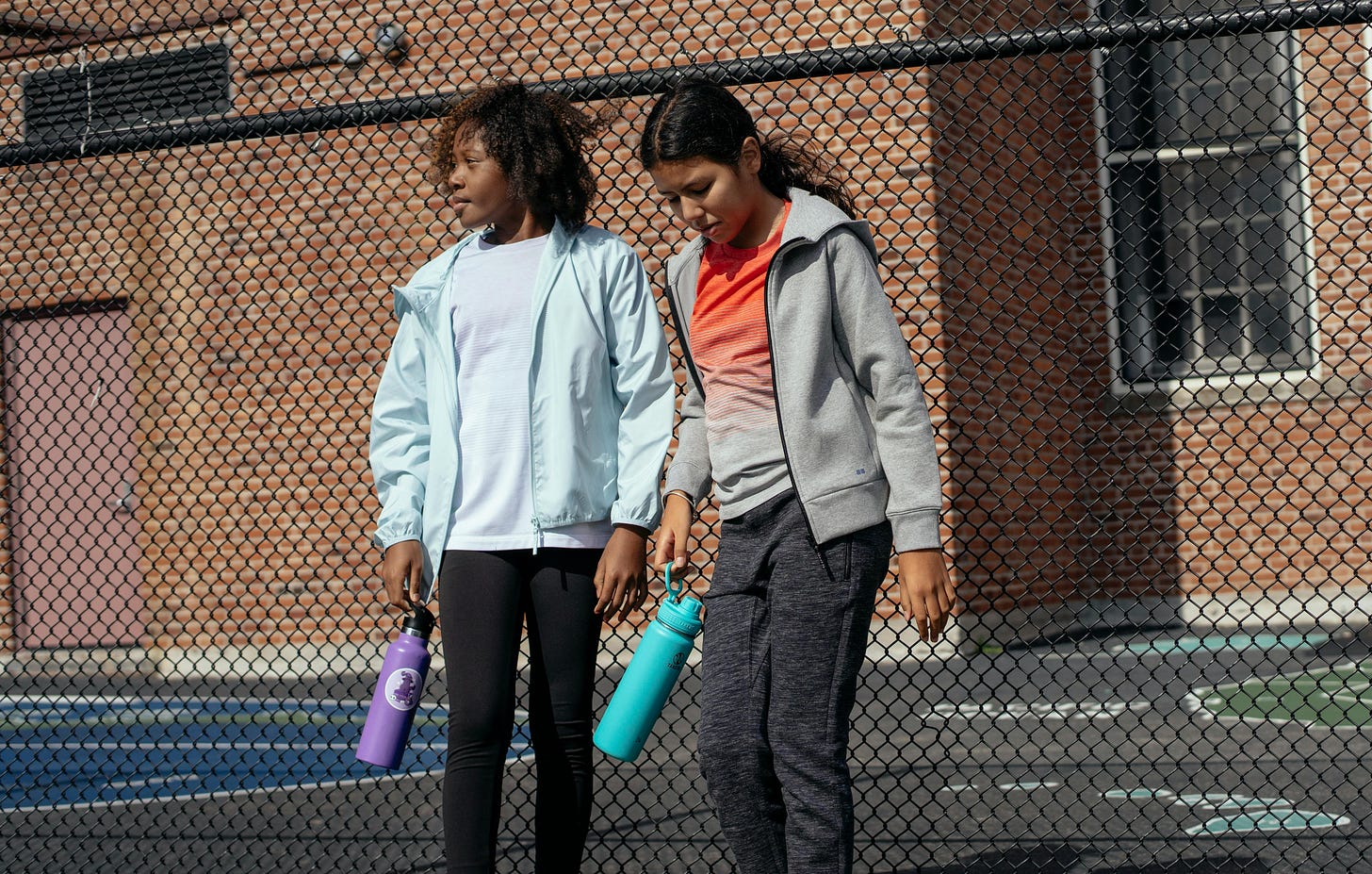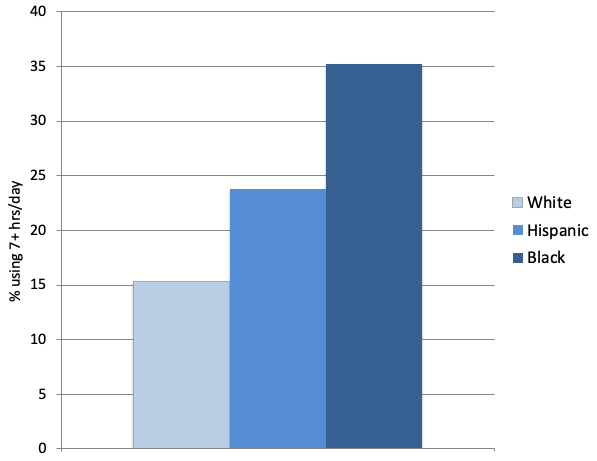Social media has stolen the leisure time of Black and Hispanic teen girls
Huge numbers spend more time on social media than required by a full-time job
In debates around teens and social media, critics often argue that teens from marginalized groups benefit from social media. However, I’m guessing few of them realize just how much time teens are spending on these platforms. And that’s even more true for Black, Hispanic, and lower socioeconomic status teens, three groups often categorized as marginalized.
I’m going to focus on girls here, as they spend more time on social media. The data are from the Monitoring the Future 8th and 10th grade surveys, which gather large and nationally representative samples of teens in these grades in the U.S. each year. The survey has asked about hours per day spent on social media since 2018.
The datafile includes Black, White and Hispanic as racial/ethnic categories and measures parents’ education, a good proxy for socioeconomic status (I’ll use mothers’ education as it has less missing data).
There are considerable differences in social media time by race and ethnicity. Black girls are more than twice as likely as White girls to spend 7 or more hours a day using social media (see Figure 1). More than a third of Black girls (35%) spend this much time on social media – effectively a full-time, unpaid job.
Figure 1: Percent of 8th and 10th grade girls spending 7 or more hours a day using social media, by race and ethnicity, U.S. Data source: Monitoring the Future. NOTE: Data collected 2018-2023.
(Could this large amount of time have benefits, such as finding a sense of community on social media that Black teens may not get in real life? If so, there should be benefits for mental health. I’ll explore that in a future post).
Nearly 1 out of 4 Black teen girls (24%) spends 9 or more hours a day using social media — that’s 63 hours a week, a full-time job plus 23 hours of overtime. In comparison, 8% of White girls, only a third as many, spend this much time on social media. The average Black teen girl spends nearly 5 hours a day on social media, more than an hour and a half more than White teen girls (3.4 hours).
Hispanic girls are also more likely to be heavy users of social media – almost 1 out of 4 spends 7 or more hours a day using social media. About 1 out of 7 (14%) spends 9 or more hours a day on social media — overtime territory. The average Hispanic teen girl spends about 4 hours a day on social media. And this doesn’t even count video platforms like YouTube.
None of this is meant as a judgment — this is what girls themselves are saying about the amount of time they spend on social media. Social media companies have poured billions into the algorithms that keep teens hooked. These algorithms appear to have had the biggest impact on the teens who many observers, especially on the left, consider to be the most vulnerable.
There’s also a difference in time spent on social media by socioeconomic status (SES). One out of 4 lower SES teen girls spends 7 or more hours a day using social media, compared to 16% of higher SES teen girls. About 1 out of 7 (14%) lower SES girls spends 9 or more hours a day on social media, compared to 8% of higher SES girls.
Figure 2: Percent of 8th and 10th grade girls spending 7 or more hours a day using social media, by socioeconomic status, U.S. Data source: Monitoring the Future. NOTES: Data collected 2018-2023. Low SES = mother does not have a four-year college degree. High SES = mother has a four-year college or graduate degree.
While policymakers once worried about a digital divide where lower-income teens had less internet access than higher-income teens, that picture has now reversed: Teens from lower SES households spend more time on social media than those from higher SES households.
This is unfortunately not surprising. Installing parental controls on devices takes time and money. Many parents don’t know they exist (which is not their fault, given how little they are advertised). Device parental controls are difficult to use, forcing parents to buy third-party parental control software. Social media companies have advertised their products as safe for children, which they are not — but if you’re working two jobs and/or struggling to survive, you might not know that, or have the resources to do anything about it. (Remember: The social media companies don’t verify age, parental permission is not required, and there is no time limit on the apps — in fact, the companies make the most money from the teens who spend the most time using their products). So now teens with fewer economic advantages are the most likely to have a full-time job, plus overtime, using social media.
Spending 7 or more hours a day on social media crowds out time that could be spent getting together with friends in person, doing homework, sleeping, reading, spending time with family, learning new skills, or exercising. We should ensure sure teens from all backgrounds have these experiences instead of allowing social media to take over their leisure time.





Re Black and Hispanic girls’ social media use versus mental health, here’s a major complication (from the CDC’s 2023 YRBS) it would be interesting to explore:
- Yes, the more time Black and Hispanic girls spend online (many hours daily, versus rarely or never), the MORE they report frequently poor mental health: 44.3% vs 23.9%, with those using social media once a day in between.
- However, the more time those same Black and Hispanic girls spend online, the LESS they attempt suicide (15.8% vs 16.4%) and harm themselves (4.6% vs. 6.9%). How do we explain that?
This same contradictory pattern of more social media use accompanying more depression but less suicide attempt and self harm also shows up on the 2021 CDC survey. Some factor seems to intervene between heavy social-media-using girls’ poorer mental health and their lesser suicide and self harm. Isn’t it time to analyze what that vital factor could be?